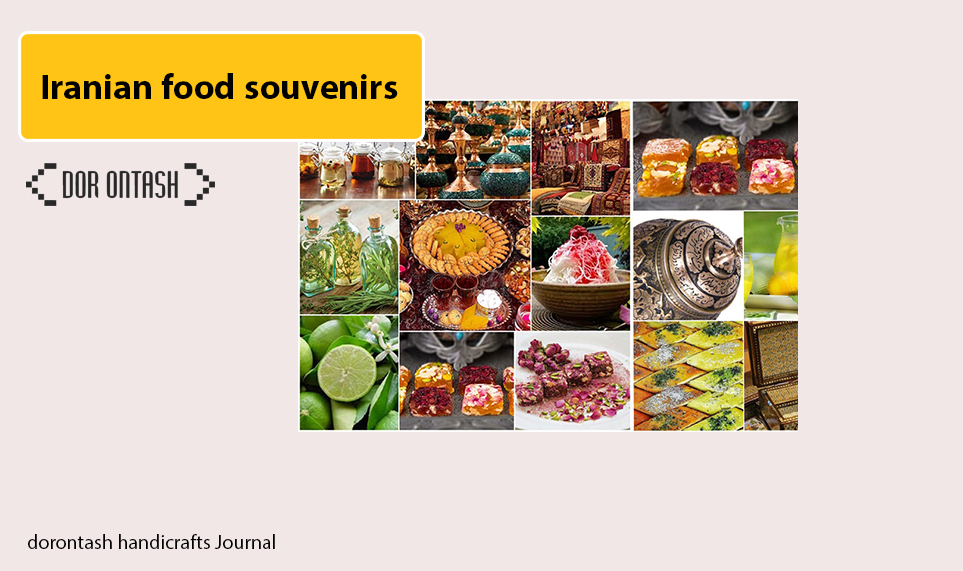types of handmade kilim in different regions
In this article, we are going to learn about the types of hand-woven carpets in different regions of Iran.
The history of types of handmade kilim and Iranian rugs
As we said, the history of carpets has a deep connection with the history of nomadic life and the desert. This beautiful item was used as the underlay of tents, a salable asset and a valuable reserve, a means of carrying goods on animals in the sense of camels and the like, as well as instead of doors and windows of tents and as a means of protecting tents and campers from the cold.
The prosperity of carpet weaving had increased so much throughout history that in the 17th and 18th centuries in the central plateau of Iran, it was considered as an inseparable part of the dowry of girls, and the cities of Farahani were known as the center of carpet trade and had a great impact on the trade and economy of the cities.
At this time, every village that had a carpet production workshop meant that a large clan or a tribe of nomads had settled there and led a sedentary life. The same process of settling down and turning to urban life caused changes in the structure of rugs
Later, the public interest in rugs and finding their way to the world markets caused a wave of changes in the texture of rugs and their designs. In such a way that traditional rugs could only be seen in more traditional areas far from modernity
Afghanistan, which is one of the most closed countries in the region; Due to this lack of communication and traditional life, it is one of the last areas where old traditions of carpet weaving can still be found. In contemporary Iran, the establishment of Mustarfa Industrial School caused a revolution in carpet weaving
Workshops for carpet weaving were also prepared in this school, and experienced professors from around Iran gathered to train the students. Professor Isa Bahadri is one of the most important students raised in this school, who is an important and influential figure in the contemporary history of weaving, especially the carpet of Iran.
types of handmade kilim and their detailed knowledge
All kinds of handmade rugs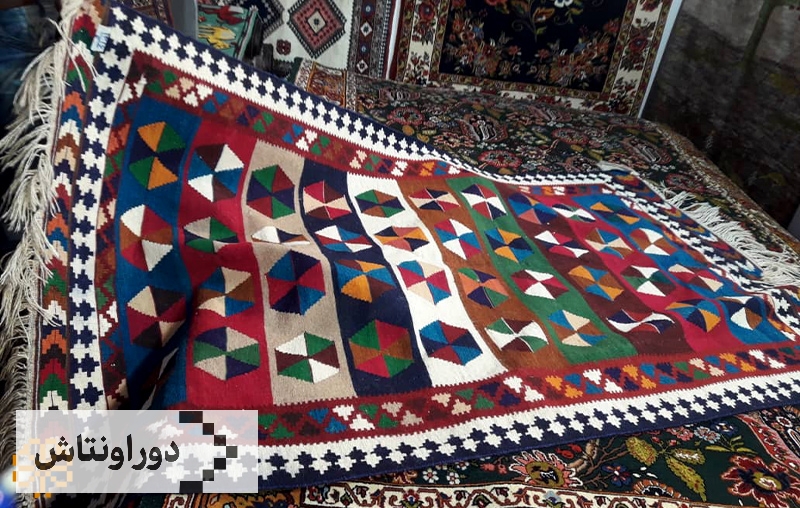
The art of carpet weaving can be considered as one of the most authentic Iranian arts, which you can clearly see a manifestation of art and elegance while being simple.
In general, a carpet is considered a type of hand-woven fabric, which, unlike a carpet, does not have any piles, and its weaving is more popular among nomadic and rural people.
Rugs have their roots in the history of the area and the region in which they are woven, so their designs and colors are completely different depending on this issue.
In order to know the types of handmade rugs, you should pay attention to the fact that you are going to categorize them based on what characteristics? In this article, we tried based on three characteristics; We will categorize their dimensions, texture type and texture area for you and check different models for you.
types of handmade kilim in terms of texture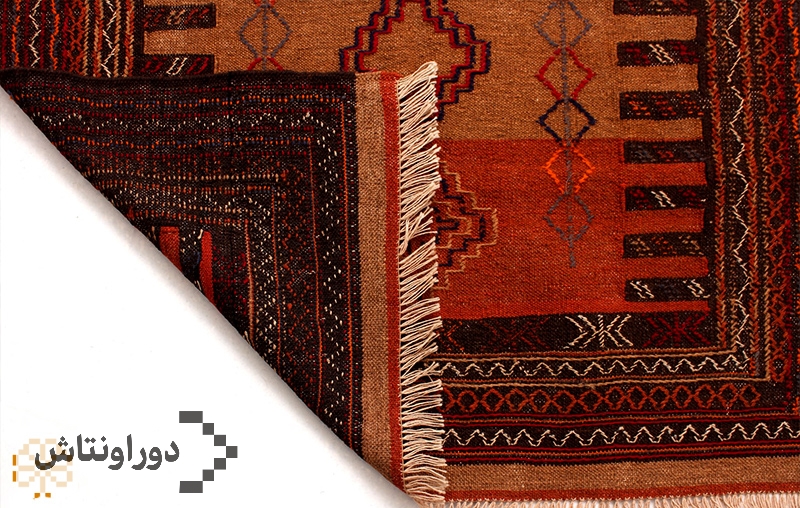
According to the methods and tools used for their weaving, all types of handwoven rugs can be classified into 3 main categories:
1. Simple or flat carpet
This type of carpet, which is also known as two-faced and plain, as can be guessed from its name, is woven in a simple style so that the two sides of the carpet are completely the same and both sides of the carpet can be used. .
This type of carpets is less thick than other models and it can be said that it is the most common option among the types of handmade carpets. Qashqai, Sane and Bijar carpets in Kurdistan, Musand and simple carpets of Ardabil, Semnan and Zanjan are in this group.
2. One-sided or varnished carpet
This type of rugs, which is also known as Sumak, is less thick than the previous option, has a twisted texture, and has a Caucasian appeal, and has been woven in Iran and Turkey for a long time.
The first weavers of this type of rugs were nomads, and as you must have guessed, it should be more popular in the Turkish-speaking regions of Iran. Varni is actually one of the types of rugs in Ardabil and East Azerbaijan provinces, which has geometric patterns, animals and simple motifs.
Varnish colors have a lacquer background, navy, cream, white, onion and light blue with animal motifs in the middle and a maximum width of 20 cm on the sides.
3. Embossed or tufted carpet
Among the types of hand-woven rugs, this type is most similar to hand-woven carpets, and it is done in this way: the carpet is tied on the skein from the pattern, and at the end, the piles or the extra creams are picked.
Of course, it is necessary to point out that in this type of rugs, the background is designed in a simple way and different designs and maps are not used much like carpets.
types of handmade kilim in terms of dimensions and sizes
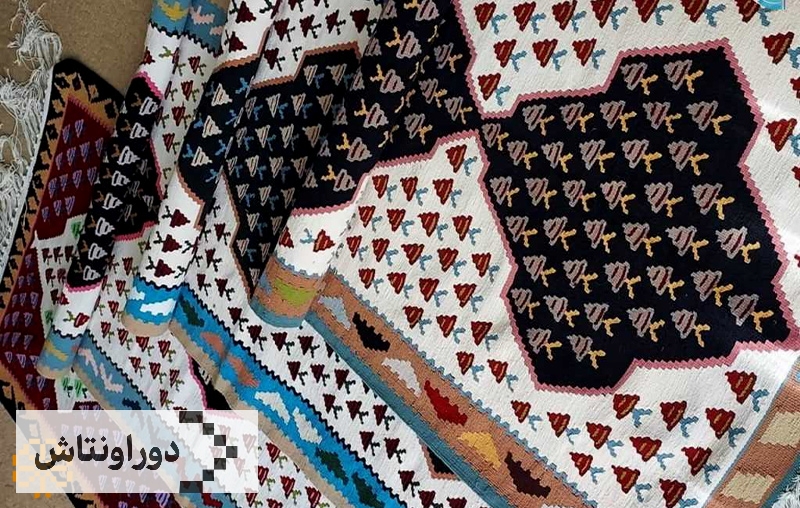 Rugs are generally smaller than hand-woven carpets and larger than carpets.
Rugs are generally smaller than hand-woven carpets and larger than carpets.
1. A small rug that is woven with an average size of 65 x 95 cm.
2. The average size of the rug is 165 x 110 cm.
3. A medium rug whose size is about 150 x 250 cm.
4. On average, a large rug is 280 cm long and 70 cm wide.
5. A long carpet that is more than 400 x 200 cm.
types of handmade kilim according to region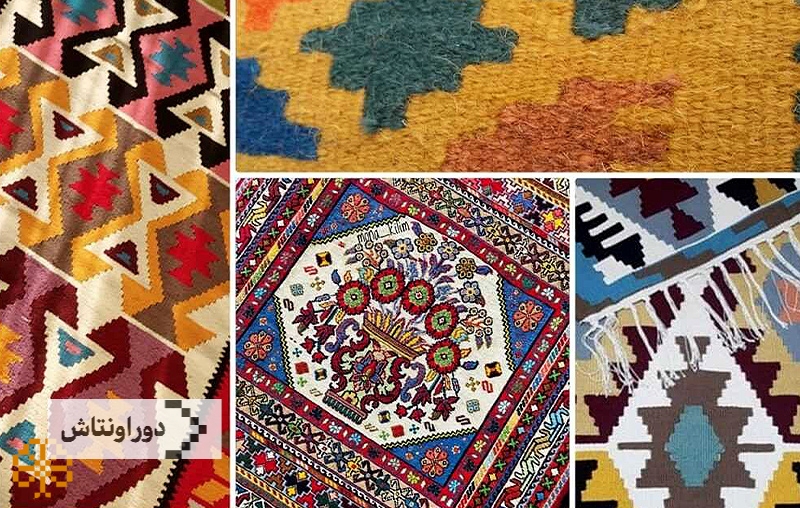
This type of division can be said to be the most basic and the best option, because as we said, depending on the area where the rug is woven, each rug has its own specifications and characteristics, and it is necessary for you to know the quality rug to buy. To get to know each of them.
1. Qashqai carpet (the most representative carpet in Iran)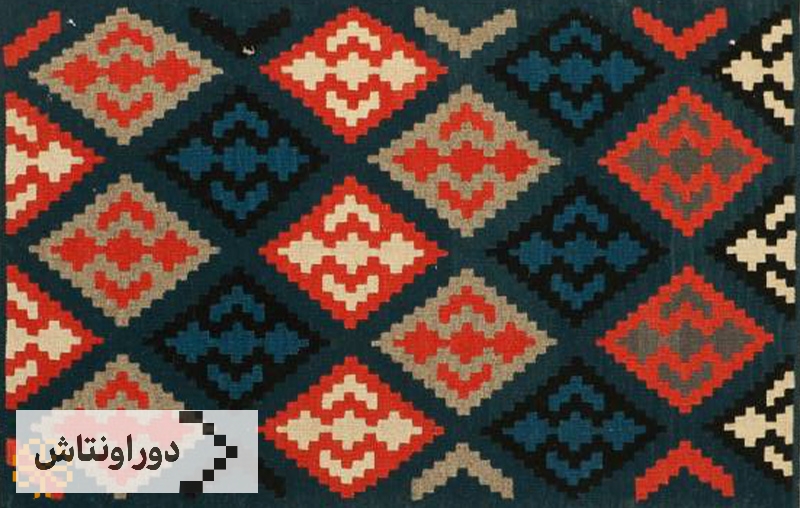
Among the types of hand-woven carpets, Qashqai carpets can definitely be introduced as one of the most famous options, and the reason for this fame can also be introduced in the variety of designs and colors used.
In fact, these rugs are woven either during the time of atrak-il or during migration, and the scenery around the weaver has a high variety and beauty, which makes the woven design have a special and special result.
Unique geometric designs, the elegance of wool, the brightness of colors, the use of animal designs such as goats and peacocks are the most important characteristics of Qashqai rugs.
2. Shahsuni carpet (the most delicate carpet)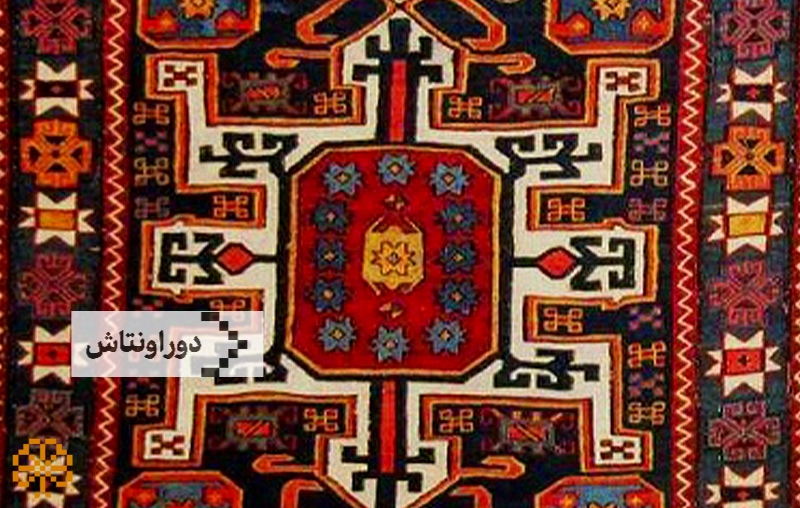
In terms of popularity, perhaps the only option that can compete with the Qashqai carpet is the Shahsoni carpet. The weaving of rugs in the Shahson tribe, which is one of the largest tribes in Iran, is so high that the rugs woven by them are divided into a separate category.
If you remember, in the first part, we introduced a category of rugs called Verni; This is exactly the carpet woven in this Shahsun; Very delicate rugs that often have animal designs such as deer, horses and birds and are woven with coarse and dry wool.
Another feature that is evident in Shah Son rugs is the use of large and prominent pictures that are used in rows in the design.
3. Harsin rug
 Among the types of hand-woven carpets that we have reviewed so far, it can be said that Harsin carpet has the most flexibility and its weavers weave many designs and plans depending on their taste and imagination.
Among the types of hand-woven carpets that we have reviewed so far, it can be said that Harsin carpet has the most flexibility and its weavers weave many designs and plans depending on their taste and imagination.
Harsin, which is one of the regions of Kermanshah province, is one of the main centers of carpet weaving in Iran. The colors used in the rugs of this region are mostly gray, green, white, red, purple and recently magenta.
Another characteristic of Harsin rugs is the fact that the edges and the background are filled with a variety of designs, to the point where you can rarely find an empty space.
4. Baloch rug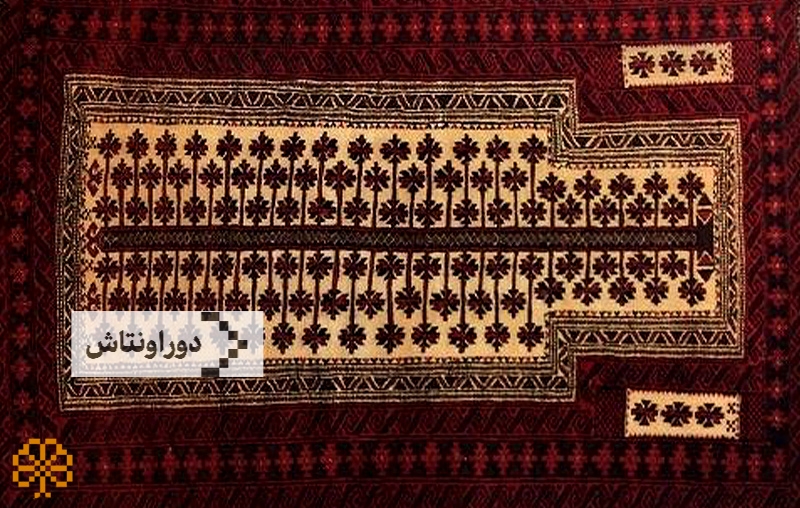
It is interesting to know that the people of this region have always tried to show the desire of water sources and pastures in their plans due to the environmental and weather conditions. Therefore, Baloch rugs can be rich in striped designs.
In general, in these areas, handicrafts are made in brown, liver, dark red, camel and dark blue colors, which are combined with happy colors such as green, yellow and red.
5. Khamsa or Persian rug
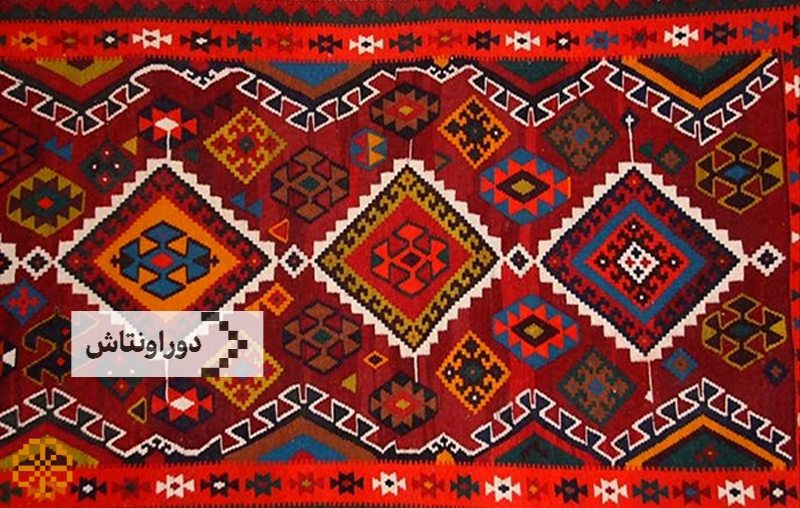 In Fars province, the Qashqai carpet has the largest volume of weaving and production, but other carpets are also woven in this region, the most famous of which is the Khamsa carpet, which is derived from the name of the five tribes of Shirazi that are mixed together.
In Fars province, the Qashqai carpet has the largest volume of weaving and production, but other carpets are also woven in this region, the most famous of which is the Khamsa carpet, which is derived from the name of the five tribes of Shirazi that are mixed together.
It is interesting to know that among these five tribes; There are two Arabic-speaking peoples, two Turkic peoples and one Persian people. In this province, among the types of darqali, only horizontal and metal samples are used, and the type of carpet that is woven is sumaki or verni.
In the Khamsa rug, the use of beautiful colors is the first letter; Also, the background of the design that is woven is mostly dark, and stars are woven diagonally in the form of intertwined rhombuses.
Other types of handmade kilim
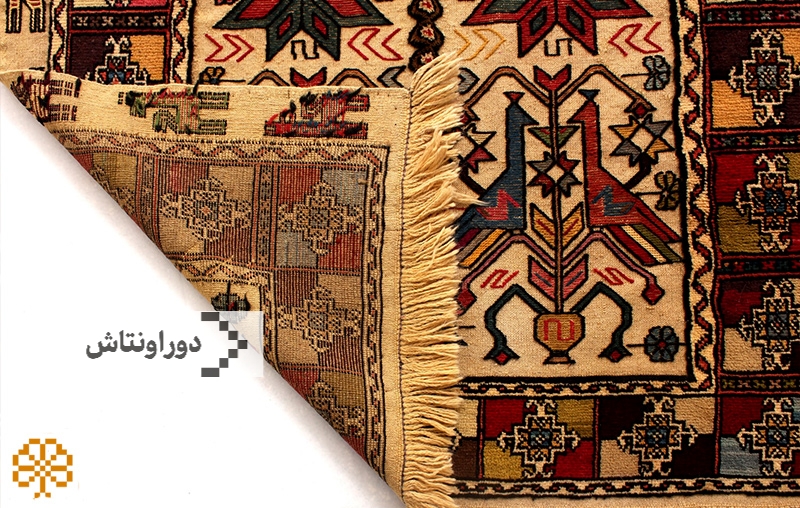 Because the number of carpets woven in Iran has variety and different types, in the following we will introduce them to you only briefly:
Because the number of carpets woven in Iran has variety and different types, in the following we will introduce them to you only briefly:
Lori rug: Among the types of hand-woven rugs, this rug can be introduced as one of the most high-quality options, which is mostly used to store items and khorjin fabric.
Zarand rug: This rug is also woven by Shahsun Turkic peoples in the form of chakdar, which is generally long, narrow and strong at the same time.
Sane rug: This rug is specific to Sanandaj city and has a special elegance, and the use of bush designs and lines and diagonals are very common in it.
Kurdistan rug: the colors include bright red, pale, dark pink, and bright green, and dola spun wool yarn is used for its texture.
Turkmen rugs: These rugs are strong and light, and the designs are grouped based on a basic pattern called a flower.
Sanandaj rug
Sanandaj is one of the most important Iranian carpet and rug weaving centers. As Sane carpets and even sometimes Sane knot were very famous at one time. The policies of some Iranian kings based on the migration of the Kurds and their forced settlement in the north and east of Iran caused them to take the weaving culture with them to different cities.
The result of this migration can be clearly seen in the north of Khorasan and the western regions of Mazandaran. But Sanandaj itself is still one of the poles of carpet weaving in Iran. Sanandaj Sumak rugs are woven with interlocking rhombus patterns and are very eye-catching.
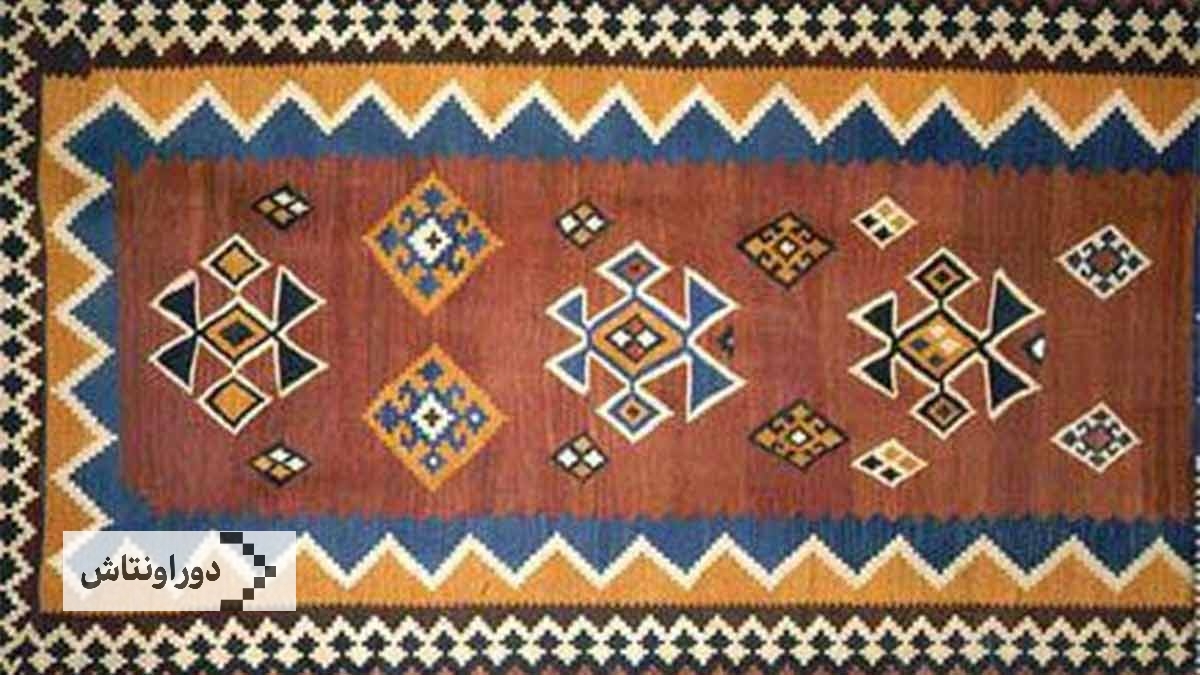 Mazandaran carpet
Mazandaran carpet
Carpet weaving and Jajim weaving in Mazandaran also had a great prosperity for a long time. Kerchal was a machine and a workshop where village women wove rugs and rugs, and many examples of it can be seen in areas such as Alasht, Lafur, or Hazar Jarib. In Mazandaran, due to the high humidity, it was customary to cover the floor of the house with felt and then They covered the felt with a carpet. Also, in forest and wooden houses, carpets were used to cover the wall and protect the house from the cold outside. Now, many carpets are woven in Alasht Swadkoh. Also, in the more traditional areas of Mazandaran, such as Belde, Iranian carpet weaving is still popular. Their big sales market is still big cities like Sari
This carpet model is also suitable for making a pesrian kilim bags because of its texture and design.
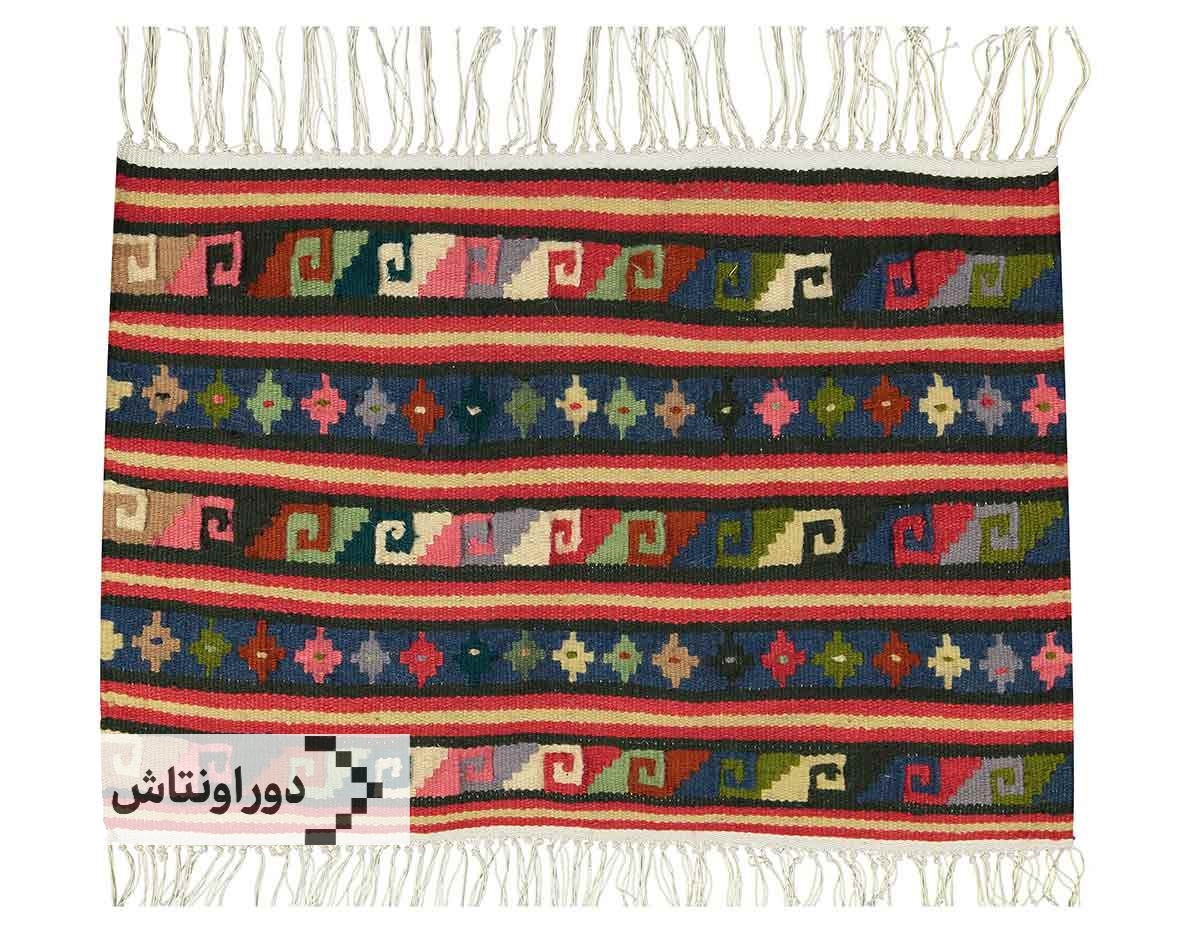 Anbaran rug
Anbaran rug
This type of carpet is woven in Anbaran, Ardabil, and it can be said that the patterns of this carpet are adapted from Shiriki Pich, and usually the tranji is less visible in the middle, and the flower of the text, which is called Kashmiri, fills it all over with repetition, and other flowers that are used in this carpet The ambers used are: Khara, Shah Abbasi flower, Garmai flower, Joft flower, and there is a border in this rug, which is called Charkhi border and the other is called Vakili border.
Applications of Iranian rugs
Due to their price and dimensions, rugs are a suitable option for covering the floor of kitchens and children’s rooms. The use of their types of machines also leaves the hand of any designer open to design a traditional or modern space. Anyway, you can put a variety of products in your home at a low price
Also, their various dimensions are very suitable for interior design. Carpets are available in the market from 2 to 12 meters; But the handmade rugs are mostly smaller in size
Advantages and disadvantages of buying Iranian rugs
The most important drawback of rugs for covering the floors of houses is the issue of ceramics. This underlay was designed for Ili and nomadic tents; But on a smooth and polished surface such as ceramic and modern parquets, it is very prone to sliding. Therefore, if you buy a rug for your home, you should think about creating friction between it and the floor.
The next issue is to recognize a hand-woven rug from a machine-made rug. Machine-made rugs are also produced these days, and you should know how to distinguish between the two. But on the other hand, carpets are very popular because of their cheap price
These underlays are always acceptable solutions to cover the strange places of the houses. Because in order to make maximum use of the house land, unbalanced designs are implemented in them
For this reason, you are usually faced with many corners in houses that cannot be covered with carpets. For this reason, rugs are the best option for this issue due to their dimensional variety
Carpet carpet machine
With the development of machine-made carpet workshops, a lot of diversity also emerged in the production of other products such as carpets. Now, as a machine-made carpet rug, it is a popular product among Iranian families. These rugs have more variety of design and role and considering their price, they are considered a cost-effective option.
If you are interested in the modern design of your home or workplace, you can go for carpets. Because they are placed in the category of modern carpets due to their various designs and plans. In addition to the density of their texture, which is often 400 combs, they give you a better quality of a rug and are more resistant to washing and pollution. These rugs are light weight and easy to move
types of handmade kilim and weaving machines
A- Simple woven carpet
The simple weaving carpet machine consists of a cashew and auxiliary wood, and the carpet is woven uniformly on it. The back and the surface of this type of carpet are the same, and both surfaces can be used.
B- Kilim woven rug
The spinning carpet machine has four gears. Each layer is moved by means of bows. In this type of weaving, all the threads are passed from layer to layer. The weave proceeds in the same way. On the back of the rug, additional wefts are placed on top of each other, and for this reason, the result of the work will be a solid and thick rug with a different back and face, which can only be used on one side.
C- Jajim Baf
The Jajim weaving machine has four cages and several bows. The main difference between Jajim and other types of carpets is the color of its threads, which are effective in the appearance of patterns like a weft.
D- Needle carpet (sumac
The needle rug machine has a needle and is generally similar in appearance to the simple rug weaving machine. In this weave, the extra wefts remain free on the back of the rug. The texture of this type of rug is very common among the nomads. It is often used for decoration
rug
It is another type of Iranian rugs that is made in Bijar and the surrounding villages of Sanandaj using the weaving method and raw materials of other types of rugs.
Its difference from normal rugs is that it is small and its motifs are more diverse than rugs, as Kurdistan rugs mostly have simple shapes and their motifs are mostly in the form of horizontal lines, while Kurdistan rugs often have diverse motifs.
In the villages of parts of the sari, a kind of rug is woven with cotton thread and wool weft in dimensions of 70 x 110 cm. In recent years, it has many applicants.
Zillow
In most rural areas, it is woven with cotton thread and is mostly used as a summer underlay
In most places, zilo is woven with weaving machines, but in the rural areas of Tehran, Saveh, Kashan and Yazd cities, it is woven in the style of carpet weaving.
The most raw material of zilo bafi is spun cotton thread and usually 6 to 8 threads are placed next to each other and are spun and used for weft.
Pallas or Pallas
It looks like a coarse rug and is produced in some areas, including Yazd.
Masnad
In the villages of Namin sector of Ardabil city, a type of carpet with small dimensions (100 x 150 cm) is woven, which is called Musnad, and its weaving history reaches 50 years in this place. Musnad has local designs and has special elegance and beauty
Jol
In the front of the motifs, it is in the form of needlework, after the completion of a simple background texture is sewn on it. These types of tissue can be used on one side and have a back and a front. The gel is used to cover the sweaty ends.
Sajjad
It is woven only for praying and has a role close to that of a carpet altar, and due to its small size and lightness, the prayer person can carry it with him.
scream
In most countries, it is used for the tent wall by dividing the tents. Chigs have no back and front, and they have the same beauty on both sides. The special motifs of chigs are the same as the traditional patterns of rugs, which have changed according to the weaving method, due to the large unit of weaving in the chig.
Alley
It is a type of underlay, meaning white or gray felt, which is used to cover the walls of tents
Ansi
A special carpet used to cover furniture
the carpet
The carpet is also used to cover household items such as bed sheets and other necessities of life and travel, and now it exists only in the tribes that still continue their nomadic life.
Javal
It is big bags and (Tobra) or Turba. These bags are hung on the wall by the tent dwellers. Jwal is a kind of food storage
Khorjin
It is the braids that the tent dwellers carry with them


